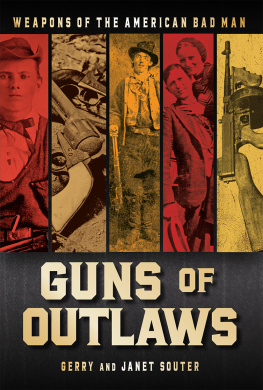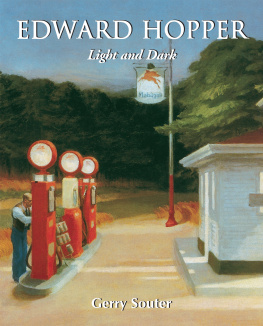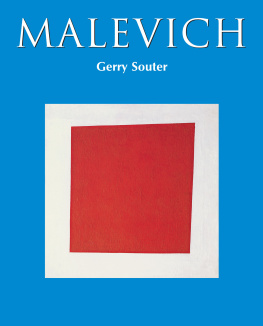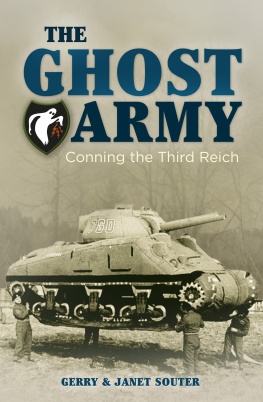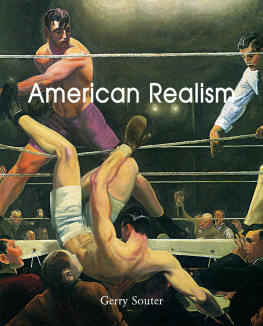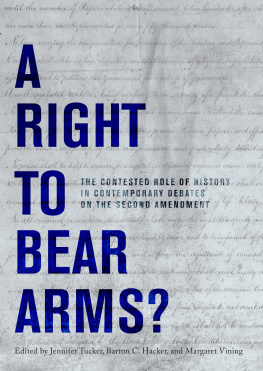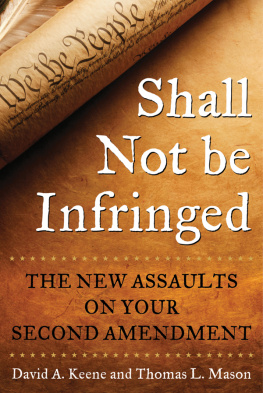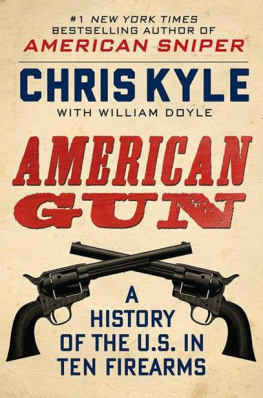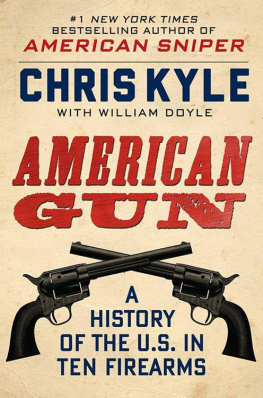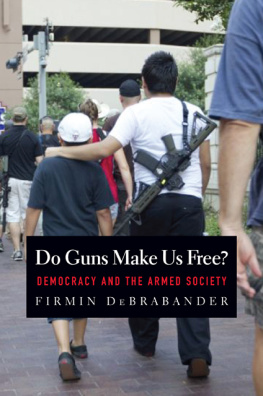AMERICAN SHOOTER
Related Potomac Titles
Lethal Logic: Exploding the Myths That Paralyze American Gun Policy by Dennis A. Henigan
AMERICAN SHOOTER
A PERSONAL HISTORY OF GUN CULTURE IN THE UNITED STATES
GERRY SOUTER

Copyright 2012 by Potomac Books, Inc.
Published in the United States by Potomac Books, Inc. All rights reserved. No part of this book may be reproduced in any manner whatsoever without written permission from the publisher, except in the case of brief quotations embodied in critical articles and reviews.
Library of Congress Cataloging-in-Publication Data
Souter, Gerry.
American shooter : a personal history of gun culture in the United States / Gerry Souter. 1st ed.
p. cm.
Includes bibliographical references.
ISBN 978-1-59797-690-9 (hardcover)
ISBN 978-1-59797-872-9 (electronic edition)
1. Firearms ownershipUnited StatesHistory. 2. FirearmsUnited StatesHistory. 3. FirearmsSocial aspectsUnited StatesHistory. 4. Souter, Gerry. I. Title.
HV8059.S63 2011
683.400973dc23
2011041758
Printed in the United States of America on acid-free paper that meets the American National Standards Institute Z39-48 Standard.
Potomac Books
22841 Quicksilver Drive
Dulles, Virginia 20166
First Edition
10 9 8 7 6 5 4 3 2 1
To the four great loves of my life:
Janet, Damienne, Allison, and Collin
Contents
Foreword
Gerry Souters American Shooter: A Personal History of Gun Culture in America is an informative and enjoyable excursion, both historical and personal. Souter sets out the problem of the polarization in public debate about guns. He seeks to separate myths and truth and insights and blunders. This book is not about the Second Amendment controversy. Yet Souter explores the nature of our gun culture and how deeply ingrained it is, both personally and individually, and broadly throughout American society.
The first chapter opens with Americas colonial heritage, the regulation of firearms, smoothbore inaccuracy, the evolution of rifles, and shooting contests. Souter interjects a personal story of his father winning a turkey shoot and the beginning of a rivalry. For a shooter who got his first gun from his grandfather at age five, this chapter resonated powerfully. My son, Elwood, now the carotid specialist for his string of neck shots on deer and elk, has surpassed his father in the field. Souter then tells of the militia system and the soldiers of the American Revolution and the War of 1812. His discussion of the Battle of New Orleans echoes Robert V. Reminis telling of the question of who killed Col. Robert Rennie in the battle. A man named Withers claimed the kill, declaring, If he isnt hit above the eyebrows, it wasnt my shot. They rolled the body over and sure enough the fatal shot had caught the officer just over the eyebrows. Accurate rifle fire carried the day.
As Americans moved west, manufacturers and shade-tree mechanics were improving weapons. Pistols designed for specific uses, and for specific clients, appeared. Souter debunks the myth of the gunfighters. We were not a gunfighter nation.restricted the carrying of weapons in the city limits. Souter maintains the reality was that the handgun became the trademark of individualism, self-reliance, dim-witted bravado, crutches for low esteem, and a status symbol with little justification. Nothing much has changed.
Souter also explores the rise of marksmanship and the development of competition. The 1874 Creedmoor competition revealed that the U.S. team only won on the last shot against an Irish team. On the frontier, Billy Dixon made a 1,538-yard shot at the Second Battle of Adobe Walls. Yet in the American military, marksmanship declined with military appropriations after the Civil War. By World War I, Souter correctly observes, Only the U.S. Marines were combat-ready marksmen.
The 1920s were a golden age for rifle clubs, with the advent of Camp Perry, Ohio, and shooting competitions. This was also a time of small-bore competitions with .22 caliber weapons. America also witnessed the development of the submachine gun in the form of the Thompson and the BAR (Browning Automatic Rifle). German handguns now entered the American market, and Luger, Mauser, and Walther models competed for sales. John Moses Browningthe father of the BAR, Colt 1911 .45 ACP pistol, and numerous machine gunsdeveloped the 1935 FN Browning with a thirteen-round double-stacked grip magazine using the 9mm Parabellum cartridge popularized by Germany. The 1935 morphed into the Browning Hi-Power with a fifteen-shot capacity.
Souters explanation of the relationship between hunting and guns quickened my pulse. He moves from hunting for survival to hunting and conservation. Hunting was a wilderness experience for many Americans. He even includes a personal story about a charging squirrel, which he finished off with a headshot. My experience was not so elegant. At East High School in Madison, Wisconsin, James Richard Beckman, Herschel Lloyd Weber, and I discovered the joys of squirrel hunting. We ventured out to unposted farmland near Cross Plains in search of squirrels and ruffed grouse. To have a chance at both, we took our 12-gauge shotguns into the field. When we found squirrels in trees, we frequently let loose with all we had and created the ten-shot squirrel. On one occasion, I saw a gray squirrel running from tree to tree about forty-five to fifty yards out and ventured a shot from my brothers 20-gauge double barrel. The squirrel immediately charged us with the ferocity of a wounded rhino. I declared, Here he comes! I fired the modified choke barrel to no avail. Weber opened up with his J. C. Higgins 12-gauge pump shotgun. One shot... two... three... four... five blasts, and on the squirrel came. Beckman, a budding chemical engineer, fired two at long range and then waited. When the squirrel was about six feet way, Beckman hit it square and cut it in half. Weber unloaded his weapon on the two parts left in the autumn leaves. We did not bag the remains.
World War II put the M1 Garand into the hands of the infantry, U.S. Marine Corps excepted. Souter writes that the infantry sprayed as many bullets as possible where they thought the enemy could be found. He also notes, The U.S. Marines operating in the Pacific were a different breed of cat. The Marines went ashore in August 1942 with 1903 Springfield .30-06 rifles, not M1s. The Marines stopped the Japanese with John Moses Browningdesigned 1917 water-cooled machine guns. Just ask a Marine about John Basilone and Mitchell Paige. You will find that machine guns and guts were the keys to victory.
The 1950s brought change. The National Rifle Association grew stronger. Women were far more visible using guns, although they were armed and proficient long before the Cold War. Now more women were armed and competing. Pistol manufacturers expanded and met new competition from Sturm, Ruger. Eugene Stoners M16 replaced the M14, and the military had a new weapon that in this century enabled women to enter combat effectively.
Souters seventh chapter about the me generation resonated with my experiences in California, where social reformers tried to right every wrong by writing legislation, product liability litigation spilled over into guns. Overreacting to the Black Panthers, antigun legislators took guns out of the hands of citizens on the street. Antigun activists used statistics to prove their points, and citizens afraid of crime dove for cover despite all the statistics and reason to the contrary. As Harvard law professor Mark Tushnet has demonstrated, putting people in jail in Richmond, Virginia, cut homicide rates by one-third.
Next page

